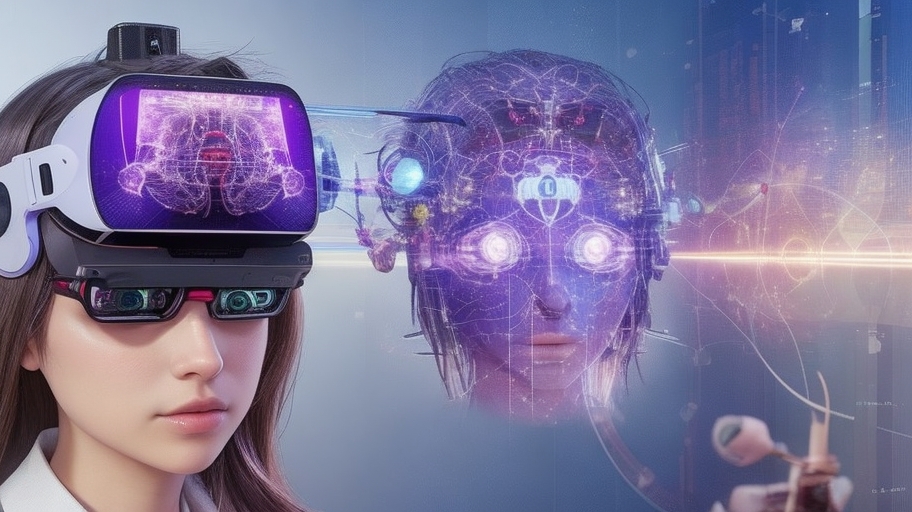In the dynamic realm of technology, the evolution of gadgets has consistently propelled humanity toward unprecedented horizons. From the advent of the telephone to the rise of smartphones, these devices have fundamentally altered the way we live, communicate, and work. As we venture into the future, a collection of groundbreaking gadgets stands ready to redefine our reality once again. This article delves into ten transformative gadgets that hold the potential to revolutionize various aspects of our existence.
1. Quantum Computers: Unleashing Unfathomable Power

At the forefront of technological innovation, quantum computers stand as a testament to the triumph of scientific exploration. These devices harness the peculiarities of quantum mechanics to process information at extraordinary speeds. In contrast to classical computers, quantum computers leverage quantum bits or qubits, which can exist in multiple states simultaneously. This enables them to solve complex problems in fields such as cryptography, optimization, and material science that are beyond the reach of traditional computing methods. Quantum computers promise to propel us into an era of unparalleled computational power, fundamentally altering industries that rely on data analysis and algorithmic processing.
2. Neural Augmented Reality: Where Minds Merge with the Virtual

As artificial intelligence and augmented reality converge, the inception of neural augmented reality marks a turning point in human-machine interaction. This technology fuses neural interfaces with augmented reality, allowing users to manipulate digital content using their thoughts and emotions. This symbiotic relationship between neural networks and augmented environments could redefine education, transform productivity, and offer innovative avenues for entertainment. Imagine classrooms where concepts are grasped effortlessly or workplaces where intricate tasks are executed seamlessly through mental commands. Neural augmented reality tantalizes with the promise of bridging the gap between our physical and digital worlds.
3. Self-Driving Vehicles: Navigating the Future Autonomously

In the realm of transportation, the emergence of self-driving vehicles is on the brink of reshaping our roads and cities. Autonomous cars, powered by sophisticated artificial intelligence and advanced sensors, possess the capability to navigate without human intervention. This holds the potential to revolutionize urban planning, mitigate traffic congestion, and enhance road safety. Beyond convenience, self-driving vehicles could bridge transportation gaps for individuals who are unable to drive due to age or disability, fostering a more inclusive society. As technology and regulations evolve, self-driving vehicles are poised to redefine mobility as we know it.
4. Smart Health Implants: Pioneering the Era of Personalized Healthcare

The fusion of healthcare and technology is exemplified by smart health implants, which monitor, diagnose, and even treat medical conditions from within the human body. These biometric wonders encompass devices like smart pacemakers that adjust pacing based on real-time physiological data and neural implants that aid in managing neurological disorders. By providing continuous, personalized health insights, smart health implants promise to empower individuals to take proactive control of their well-being. This symbiotic integration of technology and medicine has the potential to revolutionize the treatment of chronic illnesses and pave the way for a new era of personalized healthcare.
**5. Renewable Energy Tech: Illuminating the Path to Sustainability**

Amid the global pursuit of sustainable energy solutions, renewable energy technology emerges as a beacon of hope for a greener future. Solar panels, wind turbines, and energy storage systems have undergone remarkable advancements in efficiency and cost-effectiveness. These innovations lay the foundation for transitioning from fossil fuels to renewable sources, mitigating climate change and ensuring energy security. The potential to generate clean energy on a large scale has profound implications for industries, economies, and the environment, setting the stage for a more sustainable and resilient world.
6. Holographic Displays: Redefining Visual Experiences

Imagine a world where digital content transcends the confines of screens and immerses users in three-dimensional, interactive experiences. Holographic displays hold the potential to revolutionize how we perceive and interact with information. These futuristic displays enable us to visualize complex data, immerse ourselves in virtual environments, and reshape entertainment experiences. From medical imaging to architectural visualization, holographic displays offer a transformative canvas for innovation, bridging the gap between reality and imagination.
7. Personalized AI Assistants: A New Era of Digital Companionship

Artificial intelligence has evolved from being mere tools to becoming intuitive digital companions. Personalized AI assistants, driven by advancements in natural language processing and machine learning, understand context, preferences, and even emotions. These AI companions have the potential to seamlessly manage tasks, offer tailored recommendations, and provide emotional support. They could revolutionize the way we interact with technology, enhancing productivity, well-being, and convenience in our daily lives.
8. Biodegradable Electronics: A Sustainable Shift in Technology

A key environmental challenge is the growth of electronic trash. Enter biodegradable electronics, a remarkable solution that combines technological innovation with ecological consciousness. These gadgets are designed to naturally decompose after their lifecycle, mitigating the environmental impact associated with traditional electronics. By incorporating materials that are both functional and eco-friendly, biodegradable electronics offer a path toward a more sustainable tech industry, reducing the burden on landfills and minimizing toxic electronic waste.
9. Teleportation Devices: Pushing the Boundaries of Possibility

While still residing in the realm of science fiction, advancements in quantum teleportation are capturing the imagination of scientists and dreamers alike. Quantum teleportation involves transferring quantum states instantaneously over vast distances. While not akin to teleporting physical objects, this phenomenon could revolutionize secure communication, enabling unhackable, instantaneous information transfer. The prospect of secure quantum communication has profound implications for cryptography, information exchange, and the very nature of secure connectivity.
10. Blockchain-Enabled Devices: The Future of Trust and Transparency

Blockchain technology, originally associated with cryptocurrencies, has evolved into a paradigm-shifting force across industries. Gadgets integrated with blockchain capabilities offer enhanced security, transparency, and accountability. These devices can transform supply chain management, streamline transactions, and safeguard digital identities. Blockchain's decentralized architecture has the potential to reshape how industries operate, ensuring trust, reducing fraud, and fostering a new era of transparency and traceability.
**Conclusion**
The trajectory of human progress is intricately linked to technological innovation, and the gadgets on the horizon are poised to redefine our understanding of what's possible. From quantum computers ushering in an era of computational supremacy to neural augmented reality bridging the gap between the human mind and the virtual realm, each of these transformative gadgets has the potential to reshape industries, societies, and human experiences. As we stand on the cusp of this technological revolution, one thing remains clear: the gadgets of tomorrow will indelibly shape the world of the future, just as their predecessors have shaped our present.


You must be logged in to post a comment.